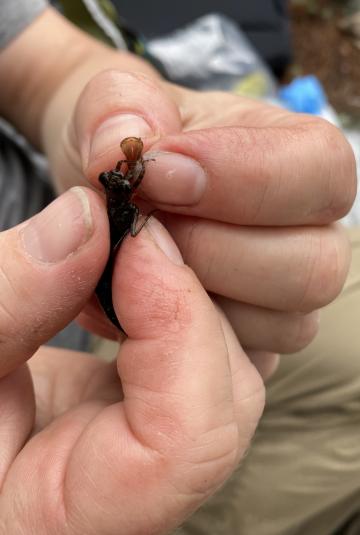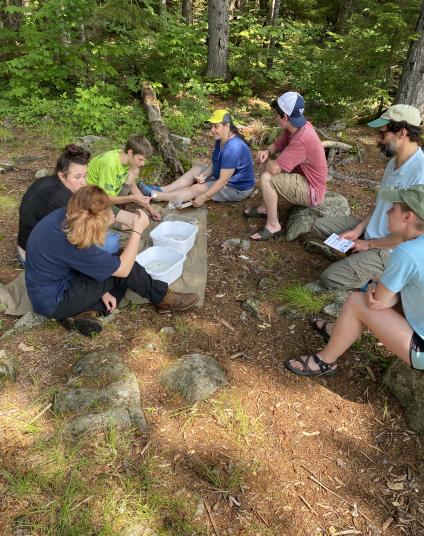Dragonfly larvae help detect mercury levels in fish, aquatic ecosystems
NEW HAMPSHIRE—It’s no wonder dragonflies are a symbol for vision and insight: They can see up to 30 “primary” colors, while we humans see the world through only three colors and dragonfly larvae provide real insights into environmental toxins. Specifically, the larvae are used to predict mercury concentrations in fish and other aquatic life and ecosystems.
The White Mountain National Forest is participating in the Dragonfly Mercury Project, a national initiative involving monitoring, research, education and public engagement to assess mercury concentrations in dragonfly larvae across the United States. The forest’s Youth Conservation Corps partnered with the Eastern Region’s Air Quality program and Appalachian Mountain Club to survey dragonfly larvae at Cone Pond in Thornton, New Hampshire, and Mountain Pond, near Jackson.
“Dragonfly larvae tell us a lot because they exhibit higher concentrations of mercury than most other aquatic insects, they’re found in a variety of habitats and their mercury concentrations cascade up the food chain to fish and other aquatic wildlife,” said Sarah Nelson, director of Research, Appalachian Mountain Club. “Their mercury levels are well correlated with those in fish, linking dragonflies to both environmental mercury concentrations and potential human exposure pathways, making them an excellent indicator for mercury risk.”
Mercury is one of the most toxic environmental contaminants and is harmful to both humans and wildlife. It gets into the air from coal-fired power plants, smoke from burning municipal and medical waste, factories that use mercury and active volcanoes. As mercury travels through the atmosphere, it interacts with various environmental processes, which can differ greatly from site to site.
“The site-specific biosentinel approach utilizing dragonfly larvae can provide more robust estimates of risk of mercury contamination,” said Nelson.
“This work is important because it gives resource managers, policy-makers, scientists and the public information to better understand mercury as it is processed in the environment and its impact on public health and wildlife,” said Ralph Perron, air quality specialist.



